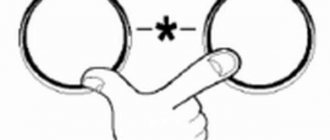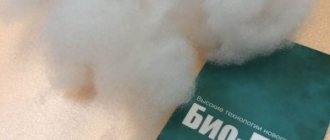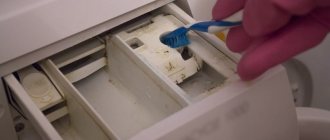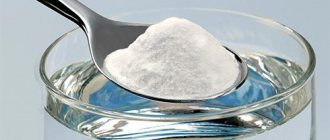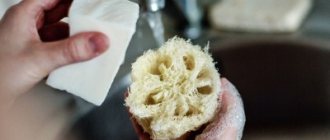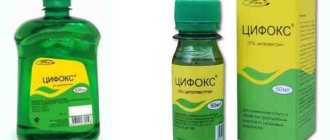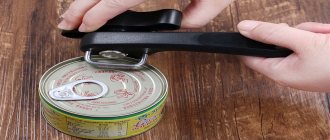Polishing agents are used for grinding and polishing metal, ceramic, plastic, stone or glass surfaces. In the CIS countries, the most widely used paste is GOI, developed by the USSR State Optical Institute in 1931-1933. The material is suitable for use at home and in production (in galvanizing shops).
Polishing rules
Polishing is done by wiping the surface with a soft rag with a paste applied to it. The rags are soaked in gasoline in advance (you can also take the contents of lighters). The material of the selected rag depends on the type of surface:
- Felt is used for metals.
- For stones, plastic, glass - cotton fabric (flannel). The more delicate the material, the softer the flannel.
- Steel knives and scissors are polished with a piece of leather mounted on a straightening board (board) or a stationary tabletop.
- Nickel and steel (except for knives and scissors) - with a special machine with attachments. When using power tools, the paste is applied to a polishing wheel.
Abrasive particles remove the top layer of the part along with irregularities and scratches. The coarser the abrasive, the greater the thickness of the removed layer.
Large particles can cause deep damage, so lumps must be broken up before polishing. To do this, wipe a rag with paste on an unnecessary surface before work.
Polish correctly using smooth movements. Strong pressure leads to the appearance of new scratches. Work is carried out until a smooth shiny surface is obtained. For deep damage, first grind the surface with a coarse paste, then use medium and fine compounds. You cannot immediately apply No. 2 and 1, otherwise the defects will become even more noticeable. Typically polishing parts takes 3-4 minutes.
The finished product is rinsed in kerosene or under running water, but it is not recommended to immediately place metal products under water. To slow down the oxidation process, metal surfaces are coated with tsapon varnish.
Jewelry, electronics
Products made of precious metals are polished only with soft cotton flannel and thin pastes, gold - only No. 1. Silver items are polished according to the standard algorithm, but before that they are cleaned according to the instructions:
- Silver is cleaned of dirt with an unnecessary toothbrush. Cleaning agent: tooth powder.
- Take an enamel bowl with water, add soap shavings, tooth powder and ammonia.
- The solution is stirred until smooth.
- Place silver into the solution and bring the liquid to a boil over low heat.
- Afterwards, the silver is removed from the vessel and washed in cold running water.
It is prohibited to use GOI paste when working with precious coatings - the polish wears away layers of gold, silver, chrome plating, etc. Before polishing mechanical watches and electronics, the working mechanisms and microcircuits must be removed from the case.
Glass, plastic
For polishing glass and plastics, only thin compounds and soft cotton rags are used. When working with plastic, the material is not wetted in gasoline; any remaining paste is removed with a dry cloth or dry paper napkin. Plastic surfaces do not need to be oiled. The glass is pre-treated with special rubber circles.
It is useless to polish sapphire glasses used to protect watches and small electronics with GOI paste - they cannot be polished with GOI paste.
How to clean gold with stones to make it shine
The method for cleaning inlaid jewelry depends on the type of stone.
When processing hard crystals (diamond, garnet, emerald, zircon), any methods can be used. Particular attention should also be paid to the strength of the fastening.
When cleaning soft minerals (coral, pearls, turquoise, opal) you should not use abrasives or brushes.
Be careful: Acetic and citric acids are also dangerous for such crystals. The best option for processing jewelry with such stones is a soap solution.
To remove old dirt, it is recommended to use a soft toothbrush or felt. The first option is suitable for processing hard minerals, the second - for soft ones.
When cleaning diamonds, you should use a solution containing ammonia and soapy water. Contact of stones with undiluted ammonia is not allowed.
Felt soaked in gasoline will help get rid of greasy deposits.
How to clean white gold
The white color of gold is ensured by the presence of silver, nickel or palladium in the alloy. Such products require careful care.
Methods for cleaning white gold:
- A solution of ammonia and hydrogen peroxide. Gold jewelry must be kept in liquid for half an hour.
- A solution of ammonia and shampoo. Products should also be placed in liquid for half an hour.
- Toothpaste.
- Mix one yolk with 40 ml of beer. Soak a soft cloth in the solution and wipe gently.
Why does silver darken?
Ancestors believed that metal darkens when it absorbs all the bad things from the owner’s body, thereby helping the person to cleanse himself. Now researchers have scientific evidence of a change in the color of the noble metal. There are two reasons for blackening of silver items:
- Oxidation with oxygen. When interacting with oxygen, oxidation occurs, since now dishes are made not from pure silver, but from various alloys that produce an organic reaction. In nature, expensive metals do not oxidize, therefore, the worse the sample, the darker the products become.
- Sulfide formation. Increased humidity and human contact release hydrogen sulfide, for example, when the body sweats. This, in turn, reacts with the metal and leads to a color change. Upon contact, a thin film of sulfide is formed, which gives the metal a dark color.
But not only humans can be a source of hydrogen sulfide. Onions, eggs, cabbage contain chemical compounds that change the color of silver. Aggressive household chemicals can also cause discoloration.
Combined method
But if blackness remains on the silver, it is possible to use a radical method. You will need:
- ammonia;
- toothpaste;
- dentifrice;
- water.
Wipe the product with a mixture of ammonia, toothpaste and powder, and then rinse off the surface with water.
Pros:
- budget method;
- anyone can clean silver using the method described;
- does not harm health.
Minuses:
- you can scratch the product with a brush or rag if you rub too hard;
- this type of cleaning may not help.
Tooth powder for cleaning silver
Tooth powder contains special microparticles that help clean the surface of silver jewelry without scratches or damage.
How to clean silver jewelry with tooth powder?
To clean a silver item with tooth powder you will need:
- a cloth with lint or a soft brush;
- dentifrice.
First, you should rinse the silver item with running water, but do not dry it. Then immerse the silver in tooth powder and rub the surface with a lint cloth or soft brush. Next, rinse with running water and wipe with a cloth.
Preparing the product
Before you begin removing black deposits, wash your silver jewelry. A regular soap solution is suitable for this. To soften plaque and speed up the process of cleaning products, dissolve a little ammonia or soda in water.
Before you begin removing black deposits, wash your silver jewelry
Now all that remains is to choose how exactly you will remove the blackness. Choose the appropriate method from those given below and get started!
If your silver jewelry is set with a gemstone, it is better to take it to a jeweler for cleaning.
Advice! If your silver jewelry is set with a gemstone, it is best to take it to a jeweler for cleaning. Many home methods can harm the stone and deprive it of its shine and radiance. Don't take risks: it's better to pay a few hundred rubles than to lose a family jewel!
For what materials is GOI paste not suitable?
Do not forget that polishing even with such a miracle drug causes irreparable damage to some materials. It is not recommended to influence:
- gilding (risk of erasing the top layer);
- steel and nickel (except for scissors and knives);
- sapphire glass from a watch (the procedure is ineffective).
Have you used GOI at home? What advice would you give to readers? Write about your impressions in the comments below.
Classification and application
There are three main grades of material - coarse, medium and fine. The latter, in turn, is divided into number 1 and number 2. Depending on the abrasive properties, the paste is divided into the following types:
- Paste N 1. It has a black color with a greenish tint and an abrasiveness of 0.3 - 0.1 microns. Chromium oxide content is from 65 to 70%. Used for fine, mirror polishing.
- Paste N 2. Dark green material with an abrasive ability of 7–1 microns. Chromium oxide content from 65 to 77%. Used for fine finishing to impart a mirror-like shine to the surface.
- Paste N 3. Has a green color and gives abrasion in one pass of 17 - 8 microns. Medium grade, contains from 70 to 80% abrasive material. Used to create a clean surface and obtain a uniform shine.
- Paste N 4. Light green material with abrasive abrasion of 40 - 18 microns. Abrasive content from 75 to 85%. Used to obtain a matte surface and remove minor scratches.
Varieties of Green Pasta
We’ll talk about how to use GOI paste correctly below. Now let's see what varieties of this material exist. Once upon a time, three types of GOI green paste were produced. And today, in a store or online, you can purchase a product with different sizes of abrasive particles:
- No. 4 - intended for initial rough polishing of surfaces;
- No. 3 - gives the surface a matte appearance, while no strokes are visible on it;
- No. 2 and No. 1 - used for finishing and give a glossy surface.
The green variety was produced both in solid bars and in the form of a more liquid paste-like mass (in boxes). The popularity of both types is due not only to the high quality of polishing, but also to their more than affordable price.
How to care for silver
Silver is loved for its nobility at an affordable price. Products made from this metal can serve their owner for many years, but caring for silver jewelry requires care and patience. Silver is most often subject to deformation due to its softness; it becomes covered with scratches, can bend and turn black. To prevent silver from tarnishing, it should be cleaned regularly. You can do this on your own and with improvised means that are present in every person’s household, or you can take it to a master. The latter option costs money, but you will receive the jewelry back intact, like new.
Properties of silver
Metal is wonderful to work with: it is easy to process, polish, twist, cut, roll into thin plates, and stretch. These parameters are unique in the manufacture of jewelry masterpieces.
For the strength of the products, a silver alloy with the addition of copper is used. The softness of the material can lead to various deformations, bending, darkening, turning black. To protect products from darkening, it is necessary to clean them regularly.
GOI paste for cars
Over time, scratches appear on the car body, headlights and glass dim, which greatly impairs the driver’s visibility. It would be logical to carry out polishing from time to time in a car dealership or with your own hands. A proven green mixture will help you cope with your problems.
Sand or polish?
All car owners should understand the fundamental differences between these processes.
- Grinding is a rough method of applying abrasives, which, by scraping off the top layer, level the surface. Used when serious scratches are evident. After this, the canvas will become matte, and additional exposure to compounds with fine grains will be required.
- Polishing is the final stage after grinding. The goal is to add shine to the product using fine-grained products.
Interesting! To understand what kind of GOI paste you will need for polishing or grinding the body, evaluate the condition of the car. To do this, run your fingernail over it. If it clings to a scratch, then the body will need grinding No. 3, and if not, then impact No. 2 or No. 1 will do.
Features of grinding different parts of a car
To polish the windshield, headlights or mirrors, use flannel, and felt is suitable for the body. The polishing paste is used as follows:
For glasses and headlights:
- Initially, wash the glass with water and shampoo, glass cleaner or alcohol, and wipe dry. This will enhance the effect.
- Polishing glass or headlights from scratches should be done with a special machine with a grinding wheel or a drill with a felt attachment. Manual work will only remove the dullness.
- Mix the green mass with machine oil at the rate of: a drop of oil per spoon of goya. Apply the mixture to the flannel pad of a polishing machine. Carefully treat the desired areas or, if desired, the entire glass.
- The direction of movement can be any, but the principle of lane overlap is encouraged.
- Periodically remove any remaining GOI with a paper towel and evaluate the result. Finish only when the area is perfectly smooth.
Important! If you are working on a specific area, then the surrounding area should be covered with plastic wrap so that you do not have to wash the entire car later.
- It is better not to grind excessively deep scratches, but to fill them with a special colorless compound.
Important! For glass, use only a thin mixture No. 1 or 2. Monitor the temperature of the glass, otherwise it will overheat and crack during the cleaning process.
For the body:
- To remove dullness from the body, clean the surface with a glass cleaner and wet it with water.
- Apply the paste to the circle of the car, wait until it accelerates to a speed of 1100 revolutions, and, without stopping, move across the area, maintaining an angle between the circle of the car and the body of 4-6 degrees.
- Remove any remaining drug with warm water under low pressure.
Video: Polishing a car with GOI paste
Toothpaste for cleaning silver
Toothpaste contains particles that perfectly clean silver without damaging the surface of the product. For cleaning you will need:
- brush with soft bristles;
- toothpaste.
Apply toothpaste to a damp brush, then use it to clean the item being treated, rinse with water and wipe the item.
Pros:
- such cleaning does not take much time;
- budget method;
- does not leave damage on the surface of the product;
- does not harm health.
Minuses:
- It is possible that the paste may not clean the jewelry immediately, or may not clean it at all.
Foreign analogues
Today you can find imported versions of such pastes on sale. A very popular option is the French Dialux. The latter has a harder consistency and is worse applied to the skin of the whetstone when sharpening knives than GOI paste. Dialux is considered more convenient to use. It can polish metal surfaces much faster and with better quality. However, such pastes are more expensive. There are many more varieties of Dialux than GOI types. This product is produced in sticks packed in paper of different colors. You can use them to guide you in terms of using Dialux for a particular metal.
This paste is applied in approximately the same way as GOI, that is, with soft, smooth movements. However, when polishing knives or other steel parts, its layer should be thinner. In this case, the paste will work in conjunction with the skin. As a result, polishing efficiency will increase significantly.
Well, we hope we have answered the question of how to properly use GOI paste in sufficient detail. The polishing procedure using this product is quite simple. The main thing is to wash your hands thoroughly after polishing.


